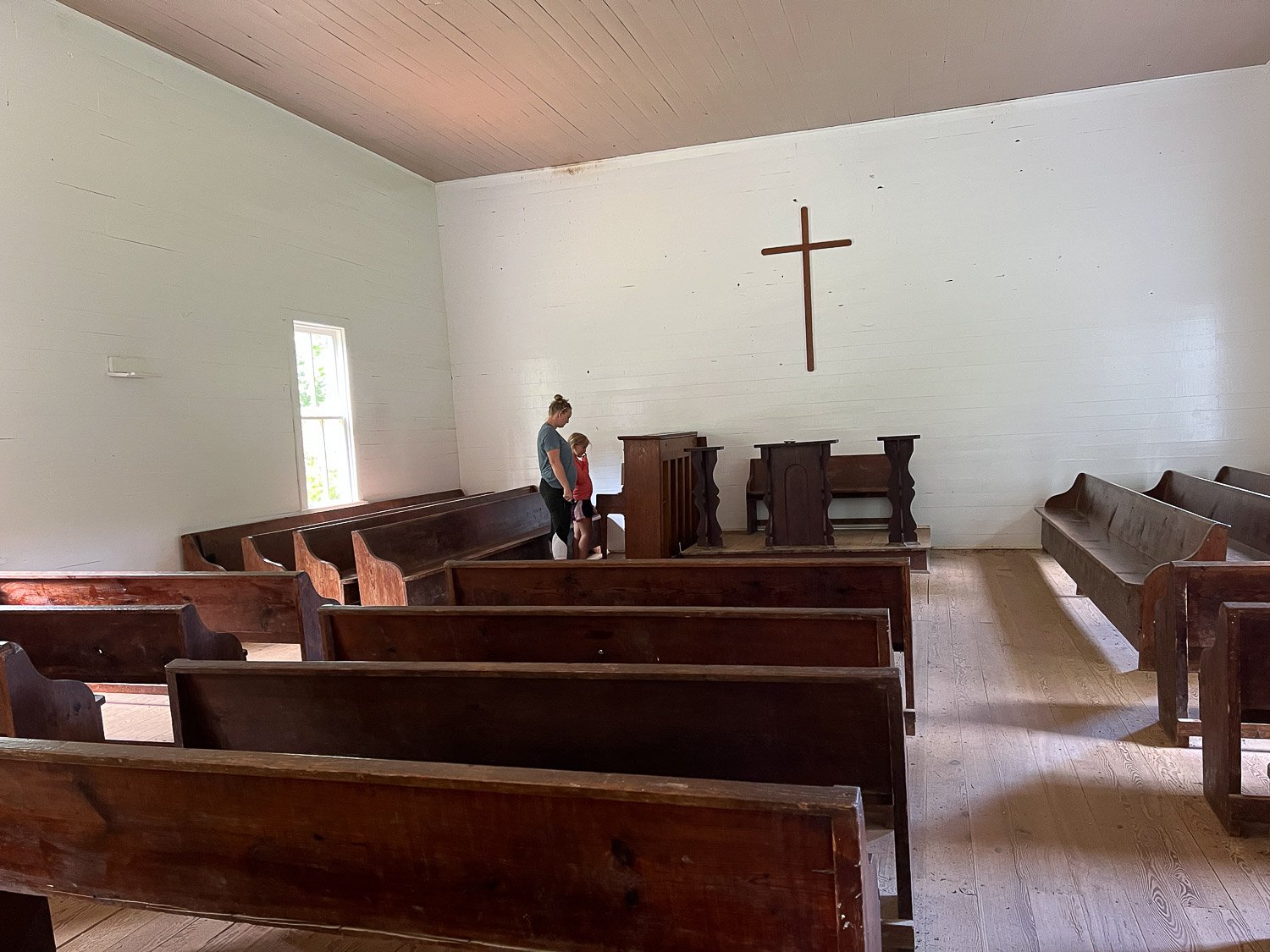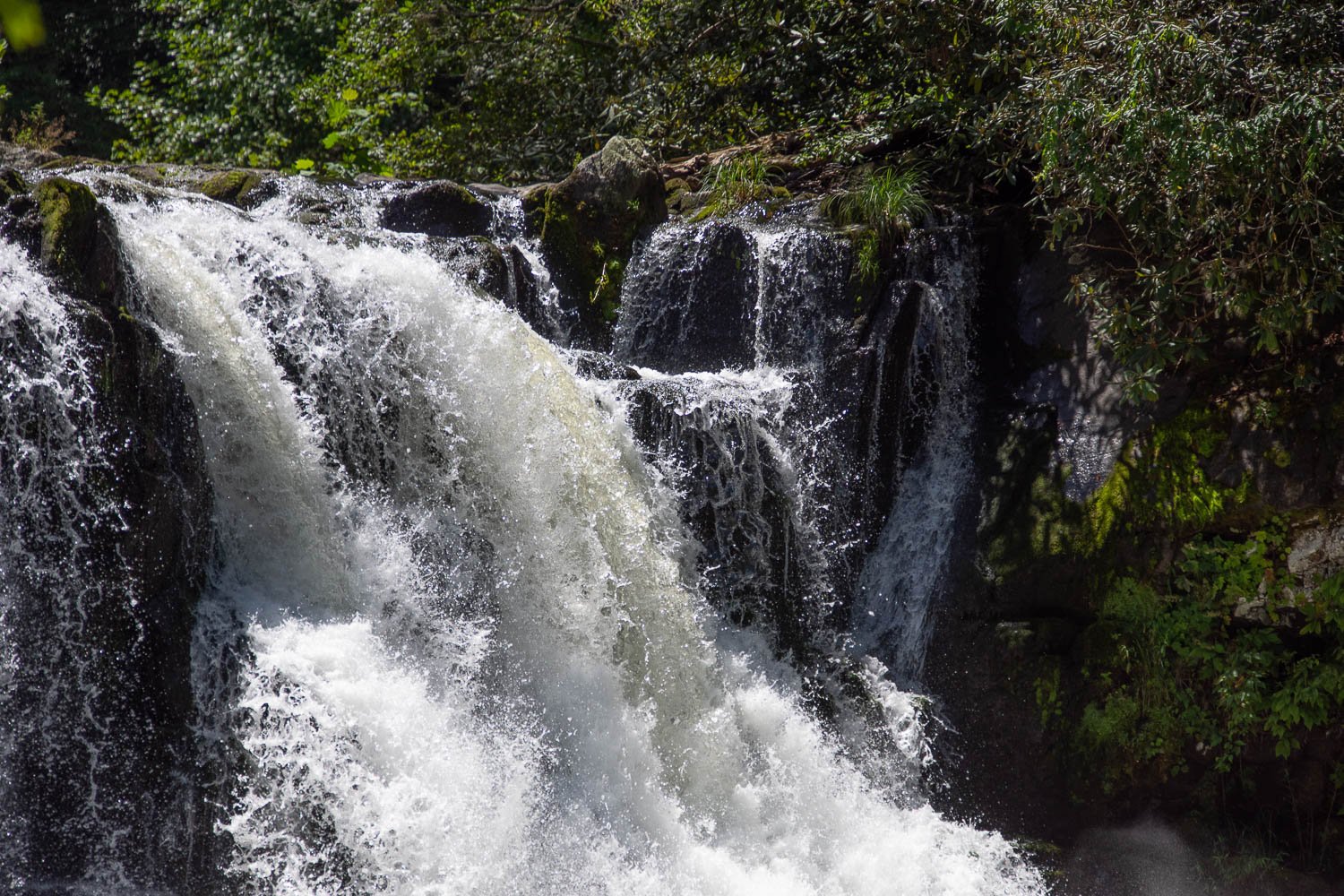TN-NC Adventure--Day 2
/Here is Day 1 of this adventure. At this rate I won’t finish for months. I’d better speed up—there is lots more going on here to share. We had all of Thursday to spend at Great Smoky Mountains National Park. We chose to explore Cades Cove and hike a trail to a waterfall in that area. We tried to get an early start because we saw from the previous day how crowded the roads and parking areas could get as more visitors showed up.
We started the the Cades Cove loop drive. Our first stop was not a marked one, but we were on a one-way loop road with no traffic and there was a horse at the fence!
I like to follow a map as we explore and I learned new terminology. I was not familiar with points on the map called Bald or Gap or Cove. In the west I think Gregory Bald, Andrews Bald, Silers Bald would be called Mountain. Newfound Gap, Deals Gap, and Black Camp Gap would be called Pass. And a Cove might be called Valley. Maybe it all has to do with scale of the geographical features or it’s just something particular to this region.
We picked up the auto tour booklet for Cades Cove, and followed along while we drove, getting out of the car at the points of interest. According to the booklet the area was probably originally inhabited by Cherokee people, but “various conflicts, epidemics, and treaties made it difficult…to remain in Tennessee lands”. In the early 1800’s white families settled. They cleared land and built log homes. Corn was a major crop. The cove is encircled by an 11-mile one-way road. On Wednesdays this road is closed to vehicles and open only for bicycles and pedestrians—that’s a great idea! Fortunately we were there on Thursday.
John Oliver Place is one of 80 historic buildings in the park. We were interested in the construction of the various buildings. The materials range from round logs with notched corners to later frame buildings that use sawed wood. Katie, still trying to design a barn on her rocky Texas property, kept pointing out the “foundation”—piles of rocks that held up many of the structures.
I thought that I would remember everything I photographed, but of course I don’t, especially since it has now been a busy three weeks since this trip. I think I have everything identified correctly with the help of the tour booklet I kept. The booklet tells that a Methodist Church was built of logs in the 1820s and then replaced by this one in 1902. It pointed out the two front doors, indicated a custom of men and women sitting on different sides. However this church didn’t follow that custom, but used the building plans of a congregation that did.
Inside the Methodist Church.
We drove to the half way point on the loop road and parked at the beginning of the Abrams Falls Trail. The trail to the falls is about 2-1/2 miles through the woods.
The map indicates “moderate” difficulty. It is a well-maintained trail with a fair amount of uphill.
This bridge is over a creek that flows into Abrams Creek.
People were spread out on the trail and it didn’t seem too crowded, but there was a crowd at the falls.
It looks as though Kirby is about to dive, but she just enjoyed climbing on the rocks in the middle of the water. No diving.
Katie is photographing Kirby with a butterfly on her knee.
I often like to identify plants in my photos, but I it was a strange feeling here because I didn’t recognize anything…
…even the trees and shrubs. It is all so different than what I am used to. It would sure be interesting to see in the fall and spring.
After the hike we continued the Cades Cove loop drive. There are several buildings at the Cable Mill Historic area. This is a blacksmith shop.
I took photos of several interesting details of construction, but they aren’t all included here. I admire this horseshoe hinge.
Cantilever barn.
There is a long ditch and then earthen flume from a mill-pond to the wheel of the grist mill. It is still operating for demonstrations.
Inside the mill building is a grist mill where corn is ground.
Another large barn.
I think this is the Henry Whitehead Place. According to the tour brochure, the small building in the back was built with logs when a cabin was needed quickly. The larger house was built of square sawn logs and the two buildings are a contrast in construction types in the Smokies.
Another cantilever barn, a replica of an earlier one that was here. Hay could be stored above and fed to animals in the stalls below.
I think this is the Carter Shields cabin, build in the early 1900s.
We spent a full day exploring all the things to see on the Cades Cove loop and hiking to Abrams Falls. One of the most exciting things was on the drive at the end of the day when we spotted this black bear!


























